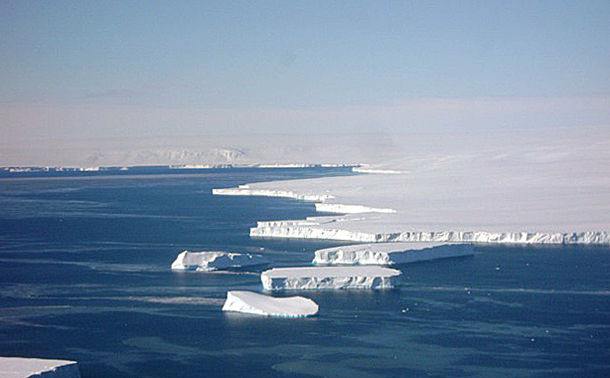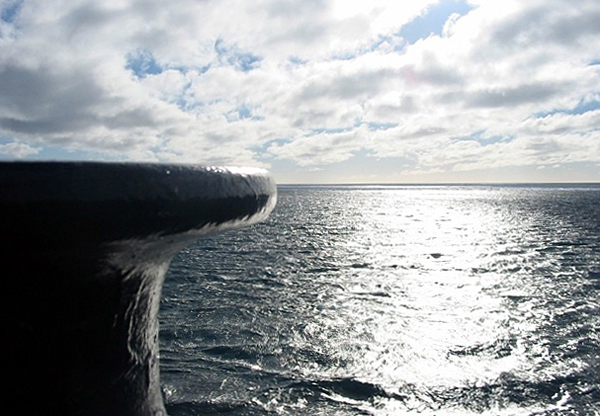Page 2/2 - Posted November 26, 2010
Vessel-based studies look at pollutants, sea ice ecology and moreBoth ships will have a full workload during the two-month expedition. The Palmer will also be busy recovering 14 moorings that were anchored to the seafloor in the eastern and central Amundsen Sea in January 2009 during a science cruise led by Stan Jacobs Jacobs and his colleagues hope the moorings will reveal new details about a mass of relatively warm circumpolar deep water that intrudes upon the continental shelf, helping melt ice from below in the Amundsen Sea area. 
Graphic Credit: COMNAP
The two vessels will travel from the Antarctic Peninsula through the Bellingshausen and Amundsen seas to McMurdo Station in the Ross Sea.
“Now they want to go back and get as many [moorings] as they can. They have about a week’s time … to recover what they can,” said Adam Jenkins, a science planning manager for RPSC who is coordinating the support for the Palmer side of the science expedition. Meanwhile, the Oden will take over the Aronson-McClintock expedition, led by U.K. scientist and collaborator Sven Thatje Dickhut is interested in how persistent organic pollutants like DDT, largely banned since the 1970s, has made its way into the polar food web. Additionally, she and her colleagues will use these chemical tracers to learn more about the year-round feeding ecology of seabirds and mammals with Swedish scientists on the Oden. Also aboard the Oden will be a U.S. team studying the physics of sea ice under principal investigator Steve Ackely with the University of Texas at San Antonio The two ships are scheduled to arrive at McMurdo Station in mid-January. The Oden will primarily break ice, lending its onboard helicopter for scientists to access nearby islands that require crossing open water — something McMurdo’s helo fleet isn’t capable of doing. Meanwhile, the Palmer will pick up four fresh science teams from McMurdo for a month-long science cruise focusing on both physical and biological oceanography. Finally, in the waning days of the summer field season, the vessel will reverse course back to Punta Arenas with a shipful of scientists, led by Jim Swift of Scripps Institution of Oceanography Swift and colleagues will perform a variety of physical oceanographic measurements, looking at processes like ocean circulation and the carbon cycle. The Southern Ocean is a critical sink for carbon. Once locked into the deep ocean, carbon can remain out of the atmosphere for hundreds of years, helping to reduce the buildup of CO2 in the atmosphere that’s warming the planet. Jenkins said that in addition to deploying moorings en route to Punta Arenas, the return cruise aboard the Palmer will collect any outstanding moorings that the vessel didn’t grab the first time across the Amundsen Sea. The two-ship operation, while the first of its kind for the USAP, may not be the last, Jenkins noted. “It may lead to quite a bit more. It’s a proof of concept too see if it works, if it’s needed,” he said. “It gets a lot of science done, if it does work.”Back 1 2 |



For USAP Participants |
For The Public |
For Researchers and EducatorsContact UsU.S. National Science FoundationOffice of Polar Programs Geosciences Directorate 2415 Eisenhower Avenue, Suite W7100 Alexandria, VA 22314 Sign up for the NSF Office of Polar Programs newsletter and events. Feedback Form |



